
Econ student, liberal, aspie, bi. Michael Kremer stan. I ❤️ optimal auction design. Spend more on drugs. Open borders now! alt @NicholasD91704
How to get URL link on X (Twitter) App

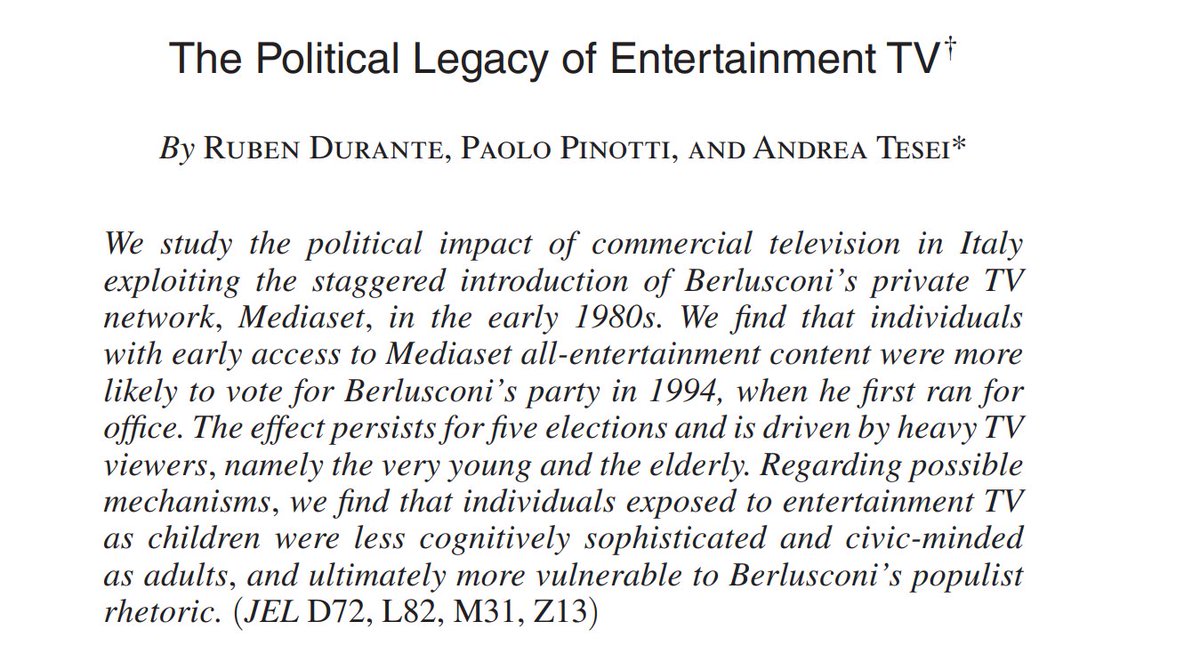
 The fundamental argument behind the paper is that the places where transmitters were placed, conditional upon controls like population and income, were unrelated to future propensity to vote for him.
The fundamental argument behind the paper is that the places where transmitters were placed, conditional upon controls like population and income, were unrelated to future propensity to vote for him.
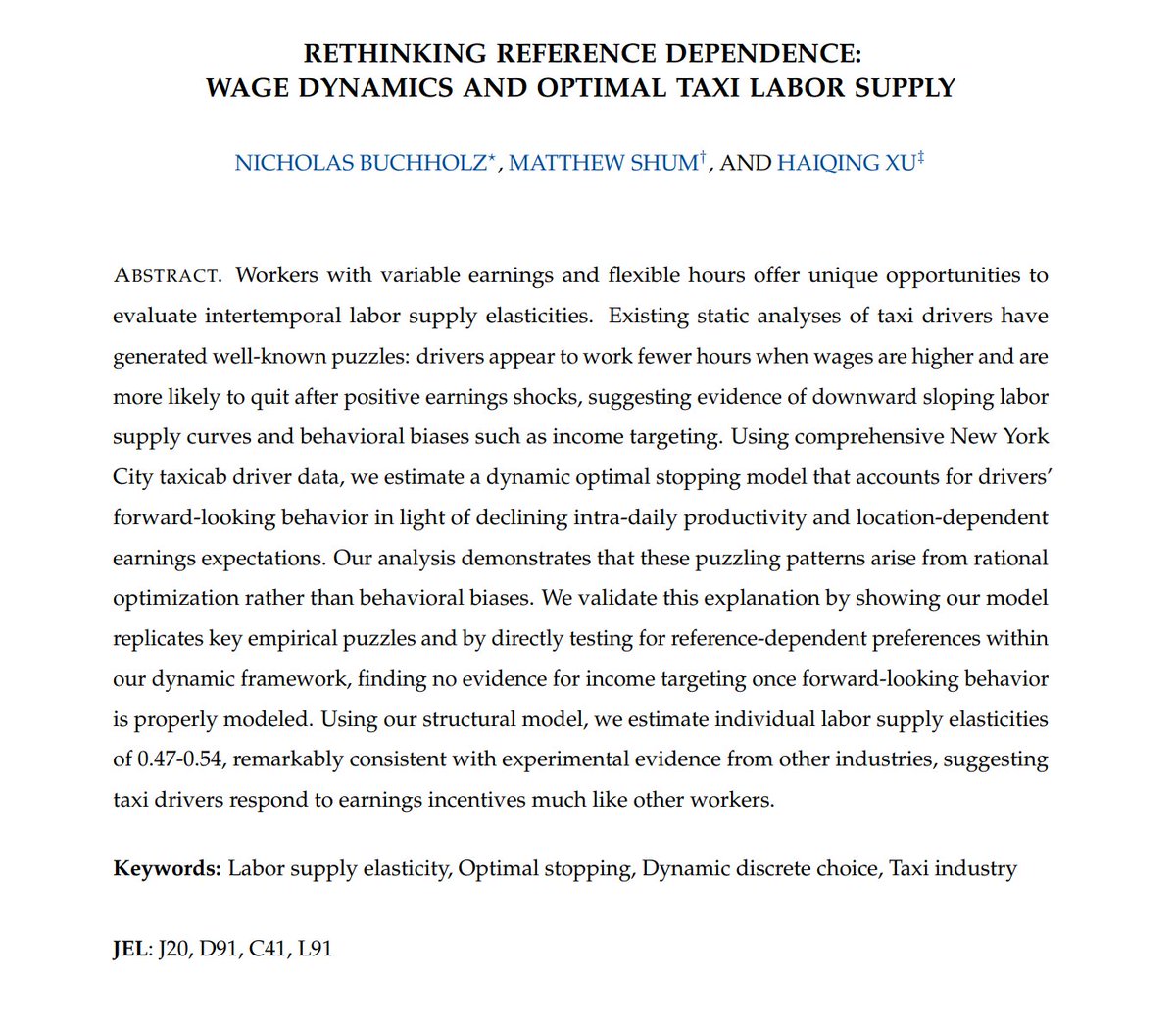
 Back in 1997, a group of leading behavioral economists thought they had found that the elasticity of labor supply was negative, which would track best with workers choosing a target. If wages are unexpectedly high, then they will work less.
Back in 1997, a group of leading behavioral economists thought they had found that the elasticity of labor supply was negative, which would track best with workers choosing a target. If wages are unexpectedly high, then they will work less. 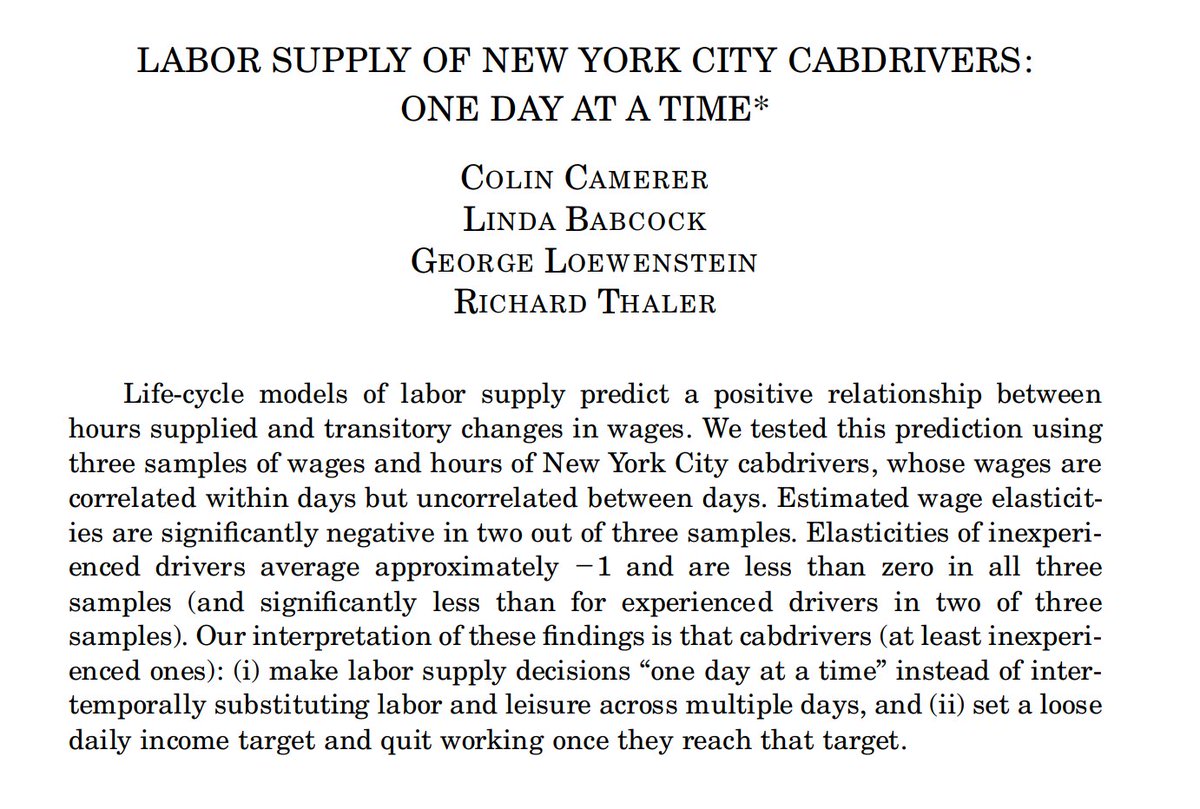

 The meta-analysis she cites is quite annoyingly paywalled, but I did eventually get to read it. The studies they are analyzing are standard lab experiments on undergrads for notetaking. They have two groups, and have them answer a quiz after watching a 15 minute talk.
The meta-analysis she cites is quite annoyingly paywalled, but I did eventually get to read it. The studies they are analyzing are standard lab experiments on undergrads for notetaking. They have two groups, and have them answer a quiz after watching a 15 minute talk. 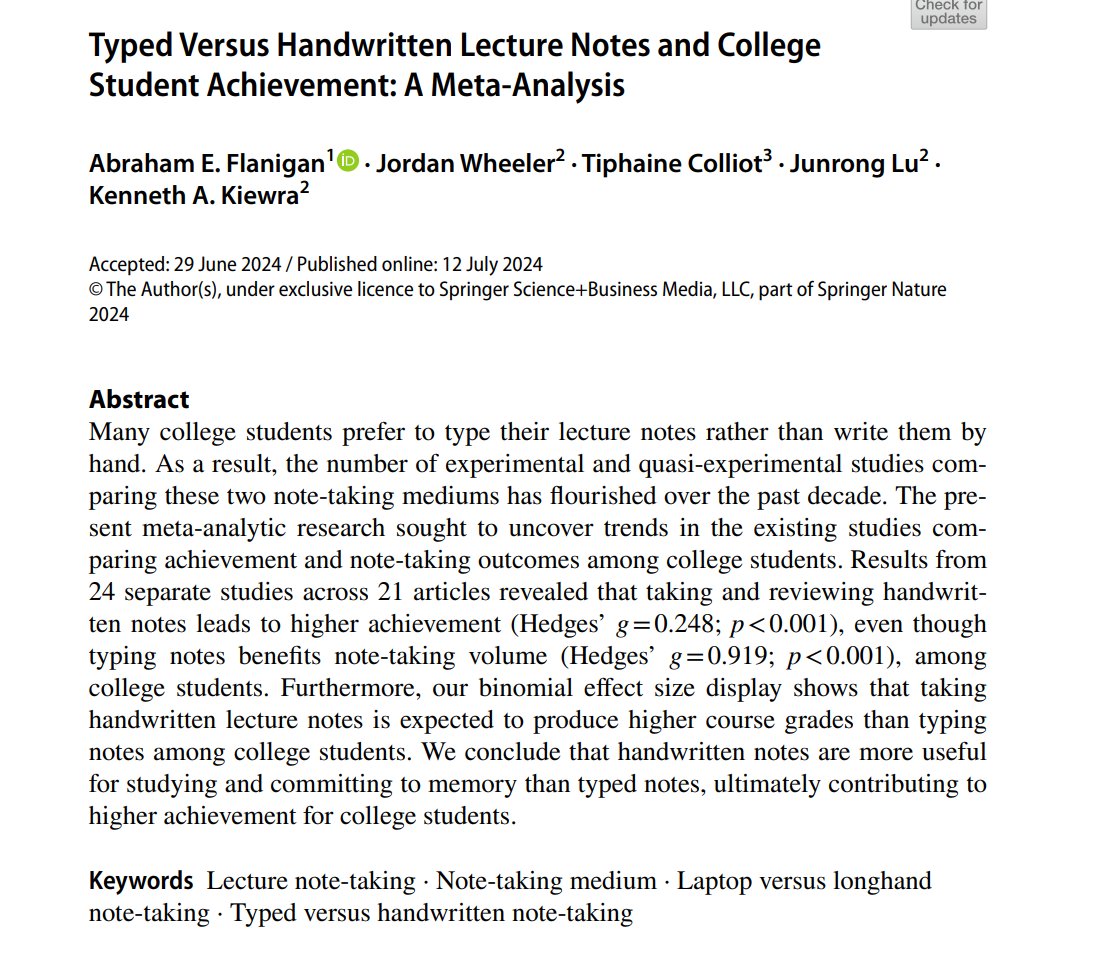

 Sialkot, Pakistan, is one of the foremost centers of soccer ball production in the world, and it all started with a chance encounter between a British soldier and a saddlemaker. By 2012, 135 firms employed around 36,000 people to produce 20% of the world's soccer balls.
Sialkot, Pakistan, is one of the foremost centers of soccer ball production in the world, and it all started with a chance encounter between a British soldier and a saddlemaker. By 2012, 135 firms employed around 36,000 people to produce 20% of the world's soccer balls. 
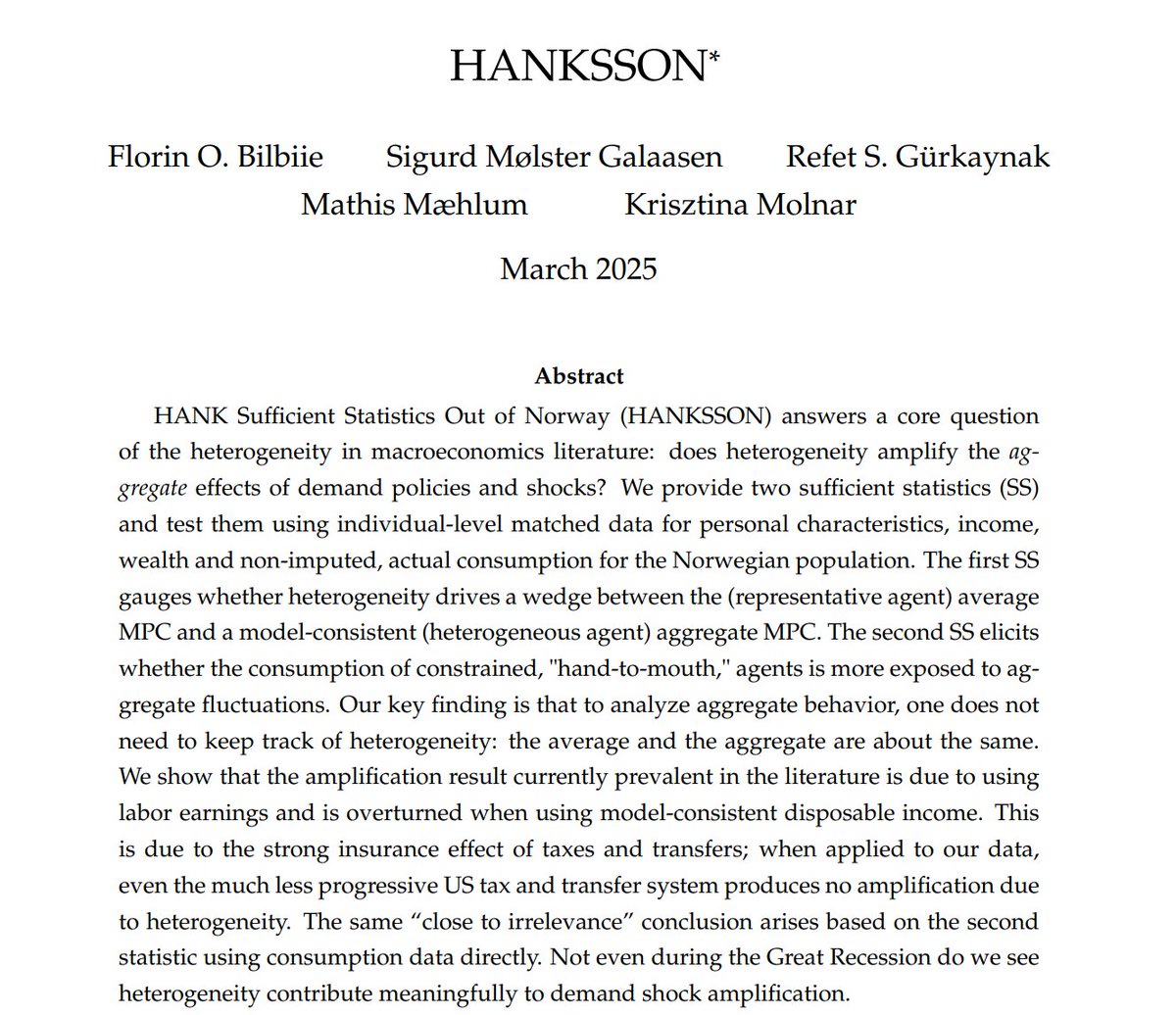
 So how did we get here? The standard New Keynesian approach was to assume a representative agent, with the average of each population characteristics. Finding the aggregate impacts of policy was easy -- just solve for the household, and multiply by the number of people.
So how did we get here? The standard New Keynesian approach was to assume a representative agent, with the average of each population characteristics. Finding the aggregate impacts of policy was easy -- just solve for the household, and multiply by the number of people.
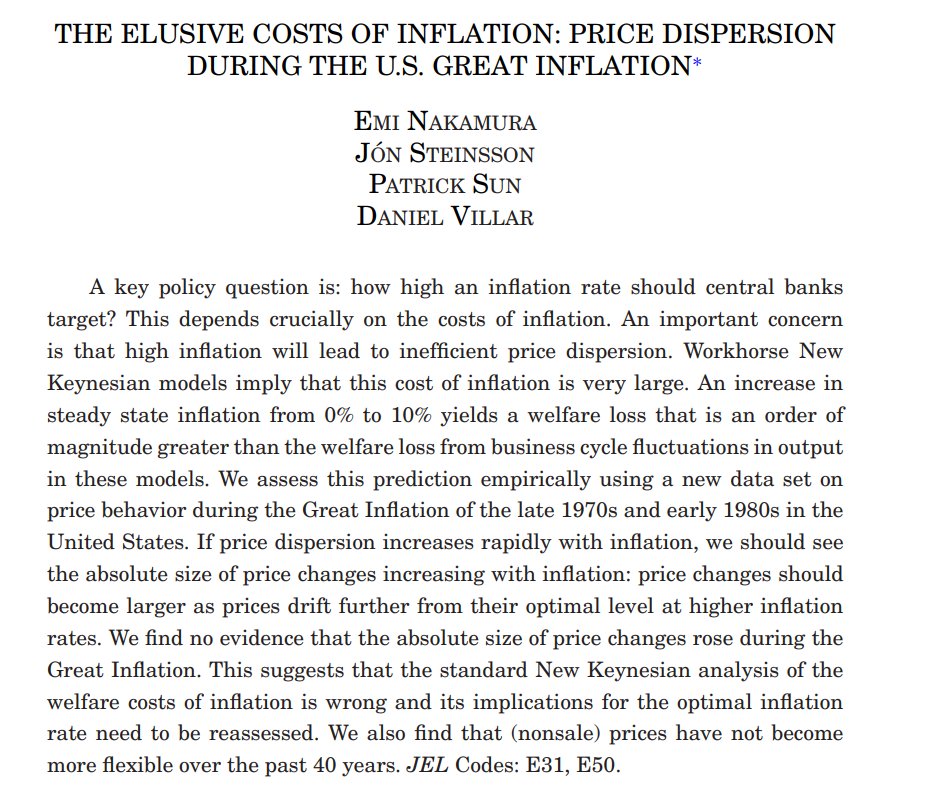
 We are going to have to detour a bit to explain the context. As noted, if prices could perfectly adjust, then monetary policy doesn't do anything. To fix this, we add in some form of stickiness. There are a few basic ways to do this.
We are going to have to detour a bit to explain the context. As noted, if prices could perfectly adjust, then monetary policy doesn't do anything. To fix this, we add in some form of stickiness. There are a few basic ways to do this.
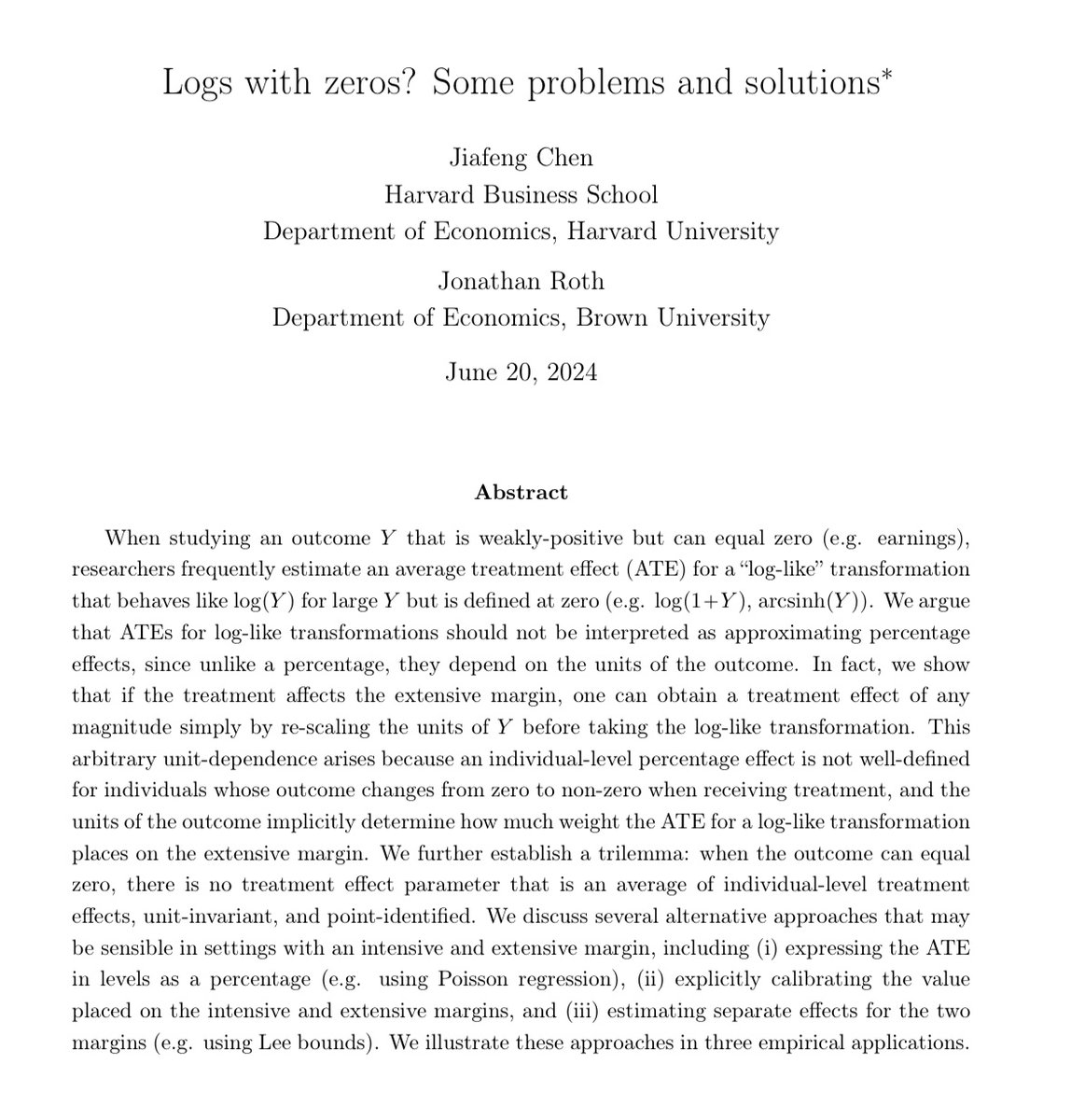
 Suppose you’re testing the effect of pay on hours worked. You have random assignment of the program, so you’re not concerned about identification. You find that it increases hours by 2 hours per person on average — no problem, the average treatment effect is easy to represent.
Suppose you’re testing the effect of pay on hours worked. You have random assignment of the program, so you’re not concerned about identification. You find that it increases hours by 2 hours per person on average — no problem, the average treatment effect is easy to represent.
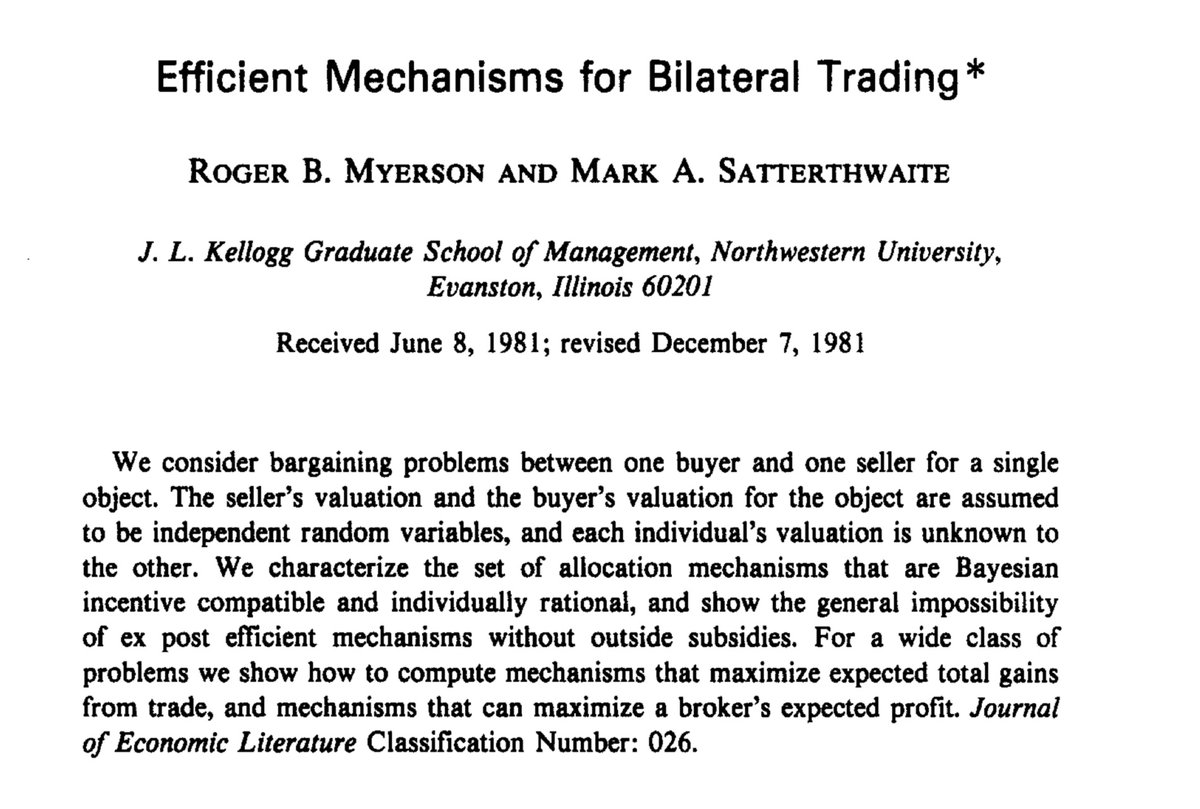
 Suppose two parties, A and B, are to trade a good. There are a few desideratum we would like to have — we’d like participating to be individually rational, we’d like to have the person who values the good more have it, we’d like no subsidies, and we’d like incentive compatibility
Suppose two parties, A and B, are to trade a good. There are a few desideratum we would like to have — we’d like participating to be individually rational, we’d like to have the person who values the good more have it, we’d like no subsidies, and we’d like incentive compatibility
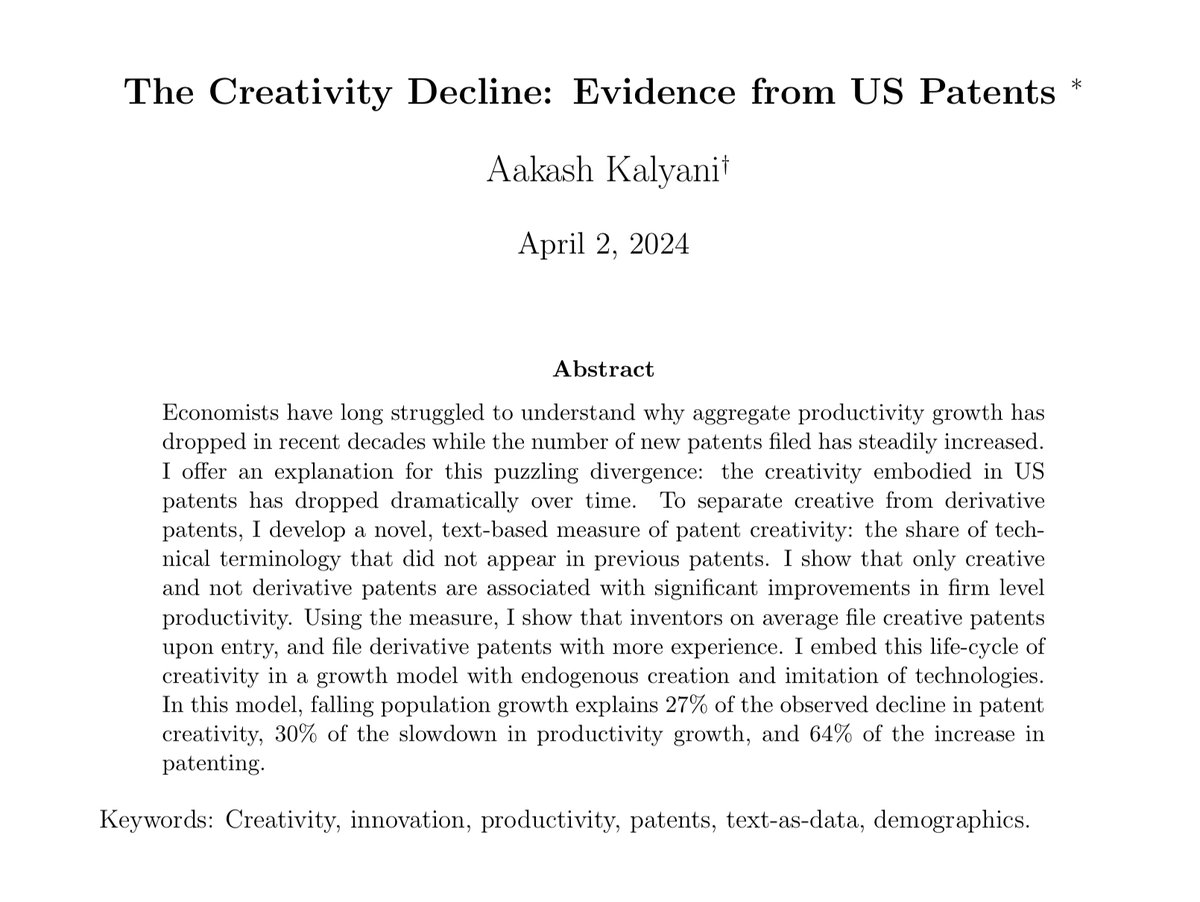
 How can you tell creativity? Obviously, we cannot have RAs read all the patents, but we can use simple computational methods. Find all two word combinations, and discard those in common use before 1900. Those are technical bigrams. The less they’ve been used, the more creative.
How can you tell creativity? Obviously, we cannot have RAs read all the patents, but we can use simple computational methods. Find all two word combinations, and discard those in common use before 1900. Those are technical bigrams. The less they’ve been used, the more creative. 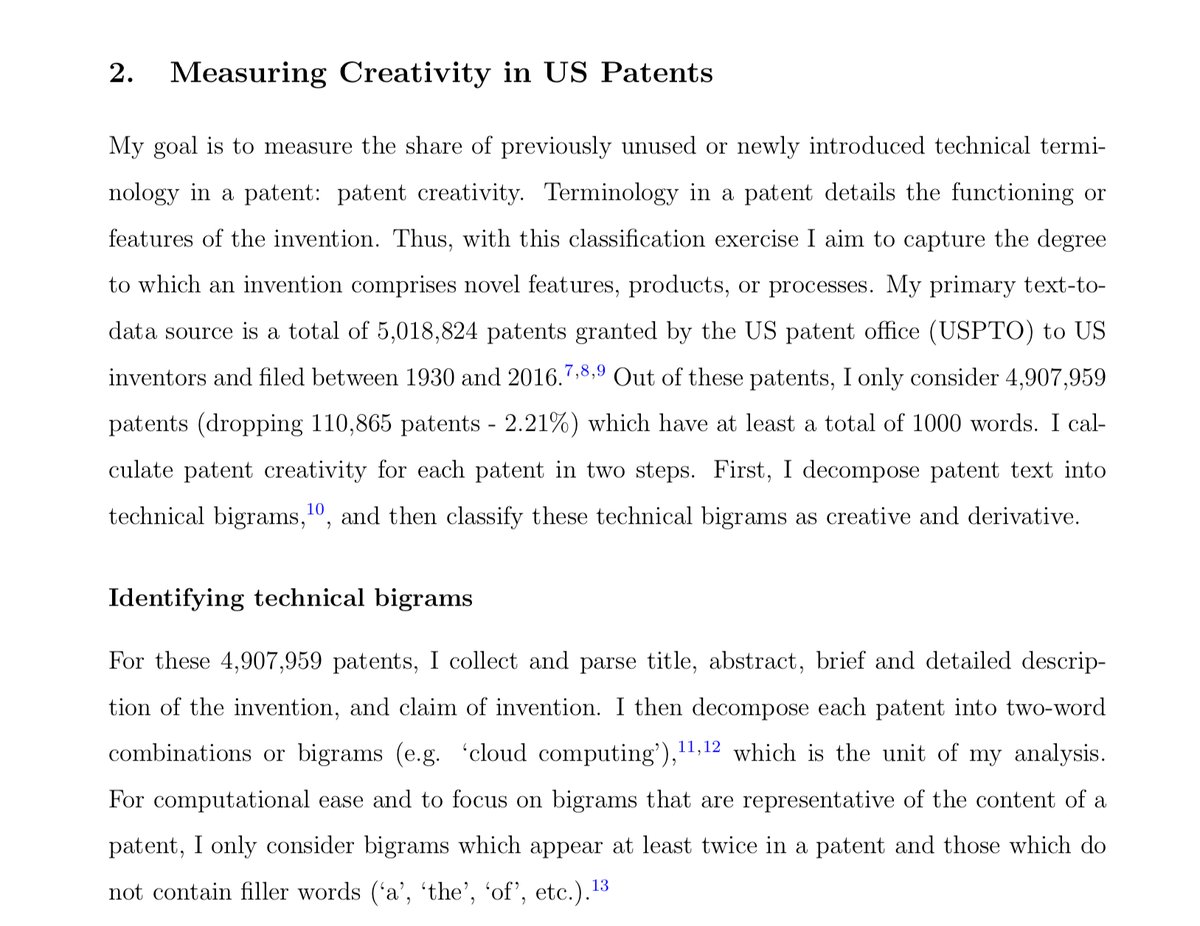
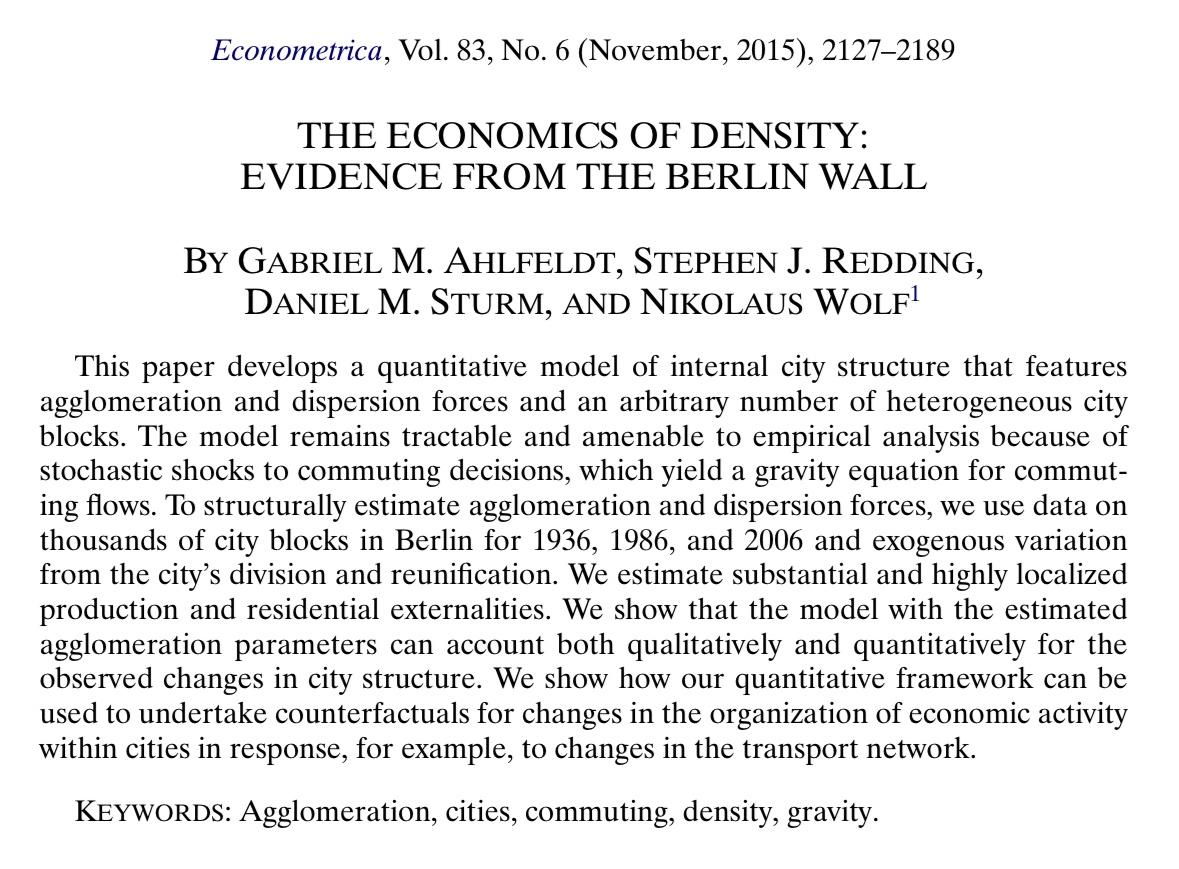
 First, the question. There are two basic reasons why people might be where they are. It could be that the location is really good for a city, or it could be that there are already people there.
First, the question. There are two basic reasons why people might be where they are. It could be that the location is really good for a city, or it could be that there are already people there.

 First, what makes this all possible — acceleration data. Uber wants to know if people are suddenly braking. Their measurements along a horizontal axis incidentally allows them to measure up and down motion.
First, what makes this all possible — acceleration data. Uber wants to know if people are suddenly braking. Their measurements along a horizontal axis incidentally allows them to measure up and down motion. 

 First things first, he has *extremely* impressive datawork. If you doing research on New York, you may find this of use.
First things first, he has *extremely* impressive datawork. If you doing research on New York, you may find this of use. 

 The concern, of course, is that the entry of Fox News is endogenous. Simply comparing before and after would not suffice, as there may be time varying trends. It might also be the case that Fox News targeted either more persuadable, or places they expected to change more.
The concern, of course, is that the entry of Fox News is endogenous. Simply comparing before and after would not suffice, as there may be time varying trends. It might also be the case that Fox News targeted either more persuadable, or places they expected to change more.

 They have the universe of privatized firms in Mexico from the 80s. Their method for finding causation is to match to a set of similar companies.
They have the universe of privatized firms in Mexico from the 80s. Their method for finding causation is to match to a set of similar companies. 

 They exploit the fact that rich and poor households spend different amounts on the same kinds of goods. They interpret this as buying higher quality goods.
They exploit the fact that rich and poor households spend different amounts on the same kinds of goods. They interpret this as buying higher quality goods. 

 Theory first. The bank gets deposits and lends them out to be paid back later. The bank promises to allow you to withdraw at will, but lacks the cash to pay everyone. If people believe it will fail, it will fail as everyone rushes to be first to withdraw their savings.
Theory first. The bank gets deposits and lends them out to be paid back later. The bank promises to allow you to withdraw at will, but lacks the cash to pay everyone. If people believe it will fail, it will fail as everyone rushes to be first to withdraw their savings.

 What makes it interesting was that there was, at that time, no methods of linear programming available. George Dantzig had not yet invented the simplex method.
What makes it interesting was that there was, at that time, no methods of linear programming available. George Dantzig had not yet invented the simplex method.

 The only way to elicit information on management is to ask people. Their RAs interviewed 732 firms in 45 minute long phone interviews, asking about basic good management practices, like recording inventories and promotions for good performance.
The only way to elicit information on management is to ask people. Their RAs interviewed 732 firms in 45 minute long phone interviews, asking about basic good management practices, like recording inventories and promotions for good performance. 

 Their empirical strategy is to only compare cousin marriage children to their cousins who were born from out of the family marriages. They check that the marrying cousins aren’t different either by showing that they live just as long as their siblings.
Their empirical strategy is to only compare cousin marriage children to their cousins who were born from out of the family marriages. They check that the marrying cousins aren’t different either by showing that they live just as long as their siblings. 
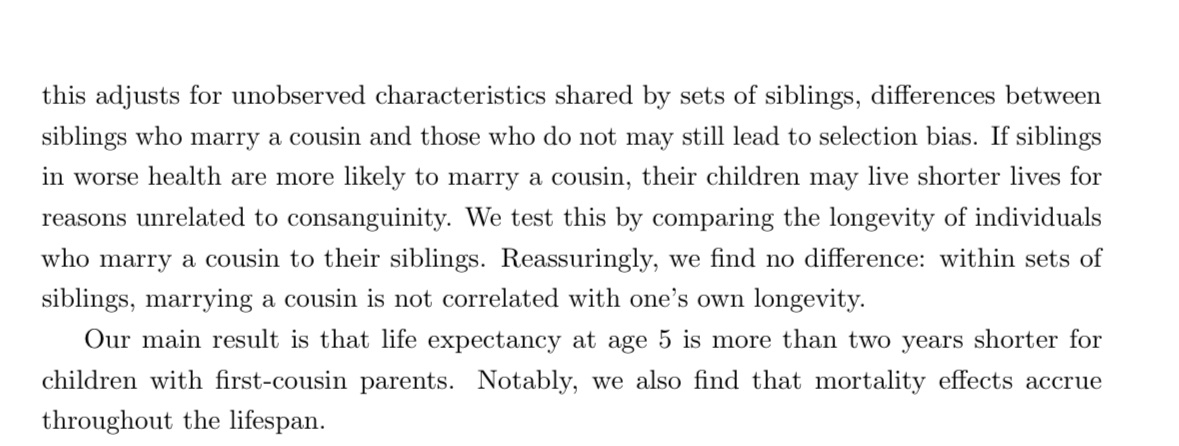

 We can calculate it by figuring out the price of a good which would set demand to 0, and then presume that this shadow price fell when it came into being. To know this, we must estimate the demand curve.
We can calculate it by figuring out the price of a good which would set demand to 0, and then presume that this shadow price fell when it came into being. To know this, we must estimate the demand curve. 

 Tishara Garg is studying the effects of industrial parks in India. These are plots of land set aside for industrialization, with substantial government promotion. These are not, to be clear, special economic zones like Shenzhen, but simply local initiatives.
Tishara Garg is studying the effects of industrial parks in India. These are plots of land set aside for industrialization, with substantial government promotion. These are not, to be clear, special economic zones like Shenzhen, but simply local initiatives. 